In the “cutlery” industry our jargon tends to be mixed whether we are aware of it or not. Because of the consumer’s (and some professional’s) limited knowledge of the genre and use of the cutlery jargon, they tend to often use what terms they’re familiar with, whether right or wrong.
We are asked frequently - Is this sword full tang? Our response 9 out of 10 times is typically NO.
Full tang is a knife term which means that the profile of the blade is visible on both sides of the handle. Most swords are not made in that fashion. A few rare swords are but we’ll expound upon that later. But typically, “full tang” is not a traditional sword handle construction, but it is for fixed blade knives.
In the consumers mind they are asking does the tang run the full length of the handle. Hence: full tang.
Here is the real question consumers are asking. Does the tang of the sword blade fully extend through the handle? Now depending on the sword will determine yes or no to that question.
In the case of the Japanese katana, the answer will be no. The closest knife terminology to describe a katana construction would be an encapsulated tang. To make a long explanation short, the tang of a katana is within a carved wooden handle (tsuka) with two holes for the bamboo pegs (mekugi) that secure the blade to the handle. Usually the tang extends much of the length of the handle. In a modern made katana there are two bamboo pegs (original katana only had one). The tang of the katana will extend a few inches just past the last bamboo peg typically. We’ve assembled and disassembled enough katana in our experience to say that’s a conservative approximation. A simple trick to determine the tang length is to put your thumb on the last peg and look that the distance from the pommel (kashira).
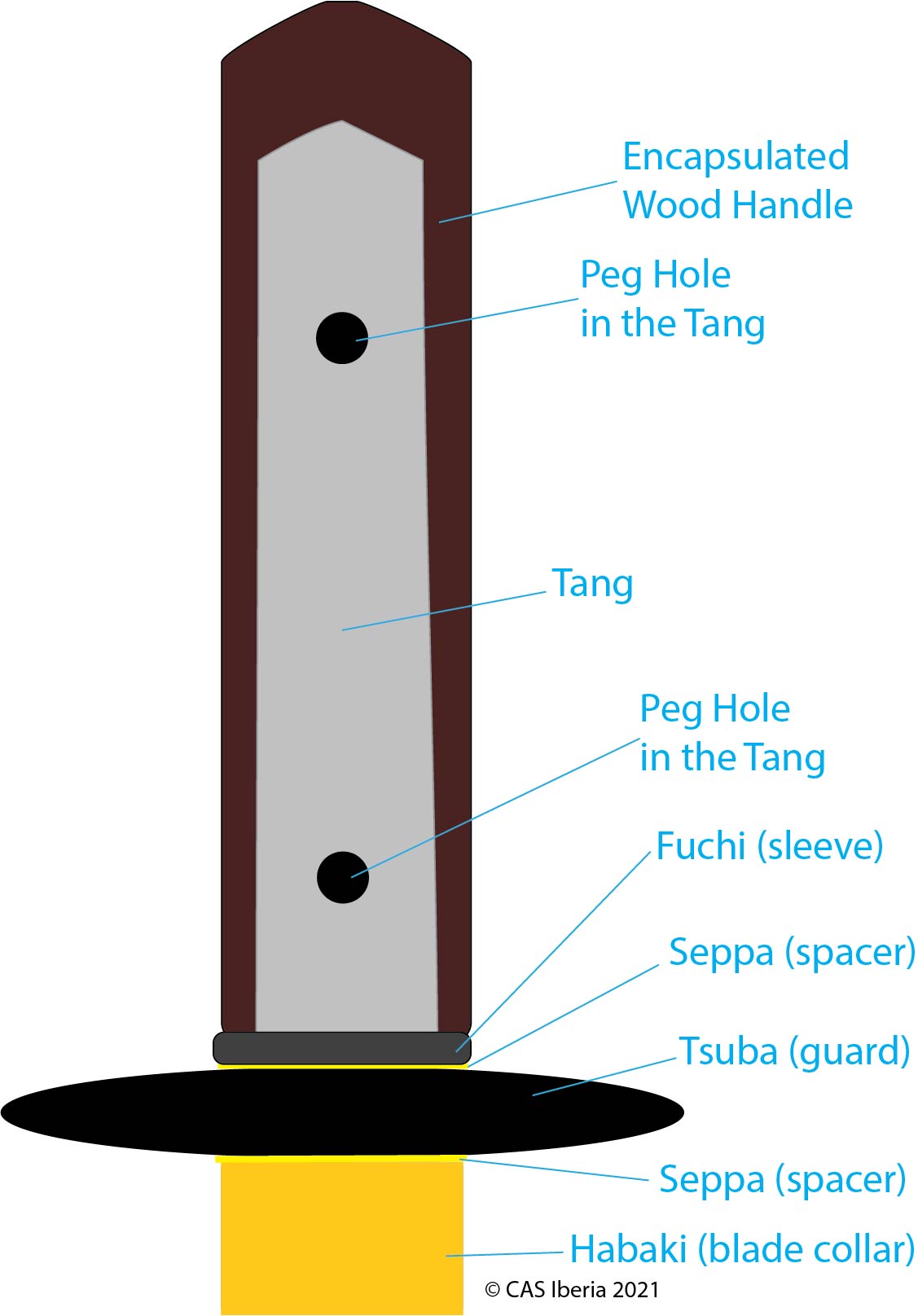
In a medieval sword where the tang is peened through the pommel, the answer will be yes.
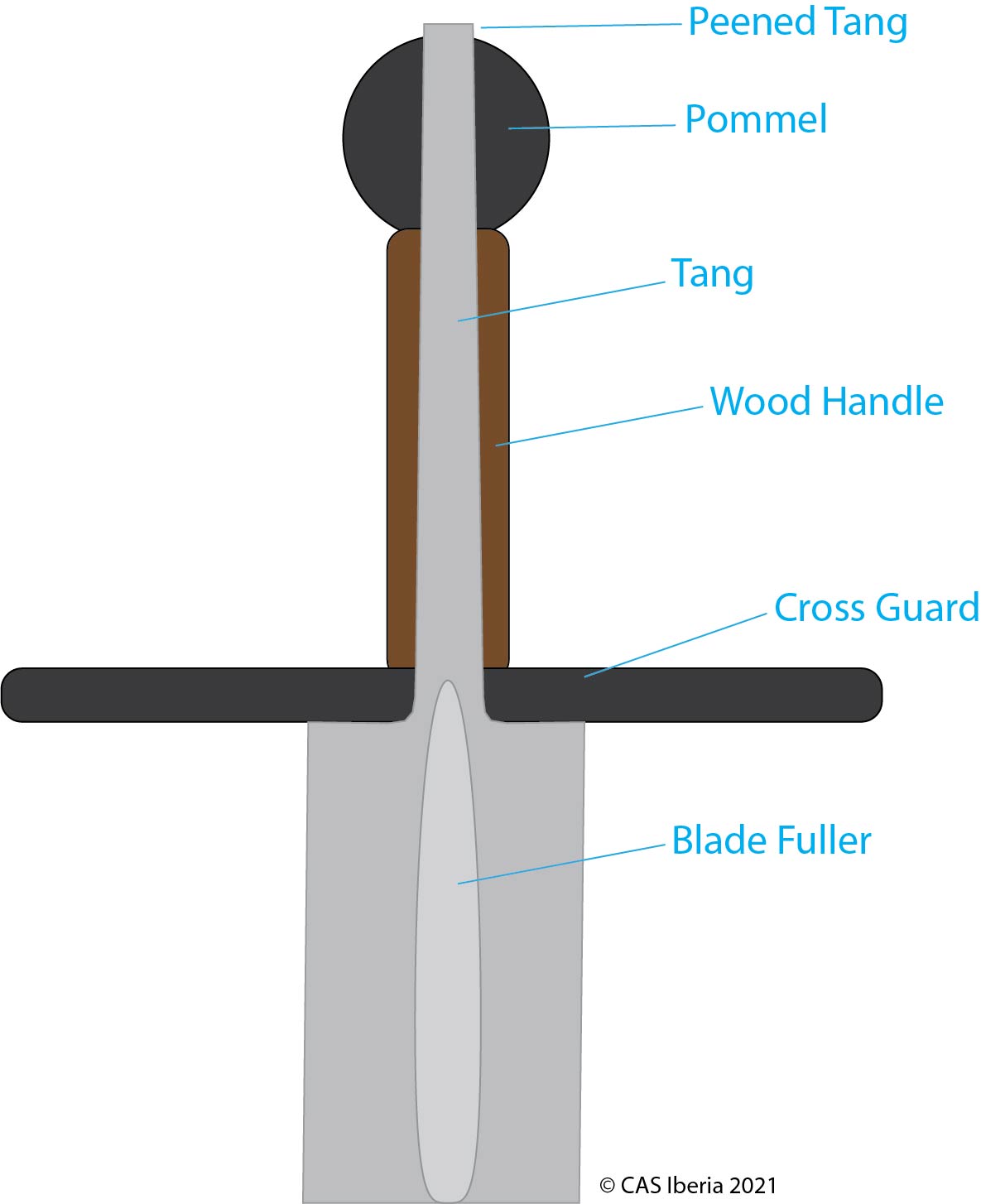
Our Lowlander Sword made by Hanwei features a through tang style construction with a threaded pommel. When you receive it in the box, you slide on the guard, then the handle and screw the pommel on and mount it to your wall. Why was it designed that way? The overall length is nearly six feet long and with the guard nearly 2 feet wide in the box. To ship the sword would cost you as much as the product itself if it were shipped fully assembled. We could peen the tang into the pommel, but it would add more to the overall cost of the product plus add to the previously mentioned high shipping cost.
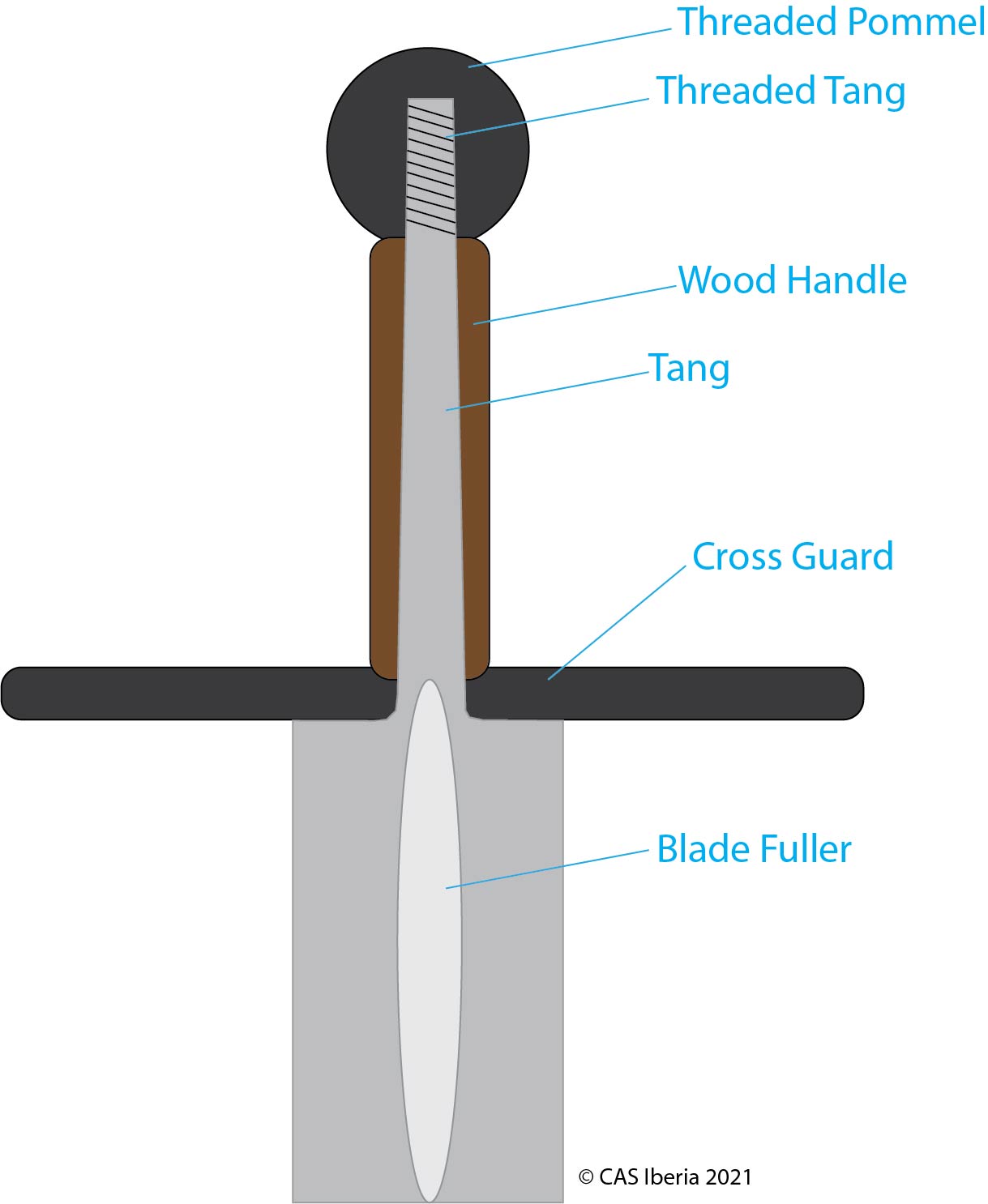
https://casiberia.com/product/lowlander-sword/sh2065
Our swords designed by Tinker Pierce feature a unique retention nut system similar in nature to the through tang construction. All these products are highly functional blades with multiple uses from cutting to sparring. This allows you to either swap out your hardware from a sharp to a blunt blade or replace the blade altogether. We do sell replacement blades for this particular line of products as well as the retention nuts.
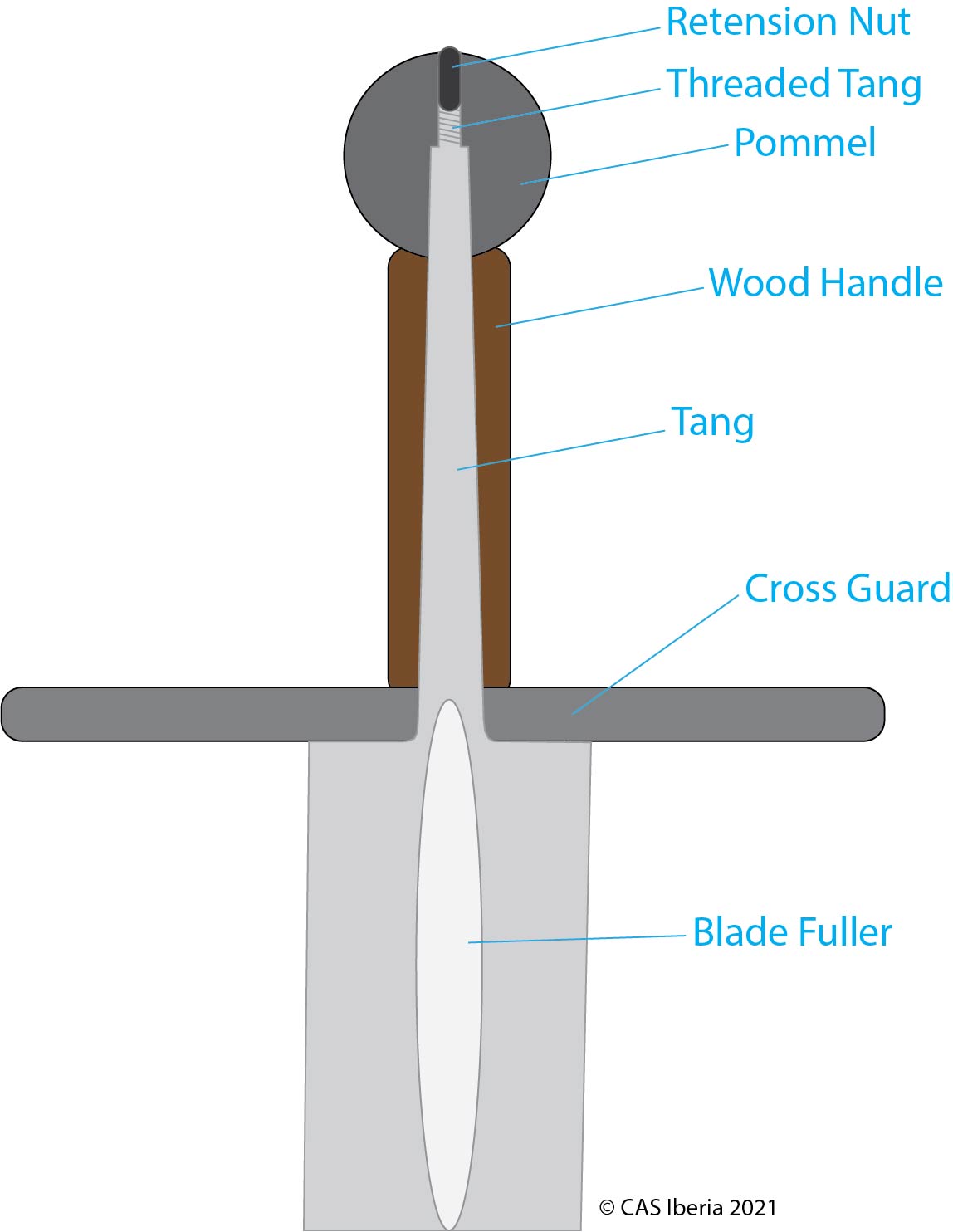
https://casiberia.com/product/tinker-early-medieval-sword-blunt/sh2405
https://casiberia.com/product/replacement-retention-nut/oh2492
Using these modern designs and construction is just plainly more convenient and cost effective for the end user and consumer.
Another reason why consumers ask about the tang construction is they are fearful of the dreaded rat-tail tang construction. If you don’t know about a rat-tail tang construction, it is where the tang (or shank) of the blade is wielded on the blade, usually its drastically thinner than the width of blade and has a threaded end where the handle is secured by a nut, a bolt or a threaded pommel. A rat-tail tang also allows you have smaller handle diameter which can be easier to grip. The rat-tail tang is synonymous with “cheaper” made swords which usually are more decorative than functional. There are several functional swords on the market with other styles of tang construction like “stick tang” and “through tang” that can be confused with a rat-tail tang.
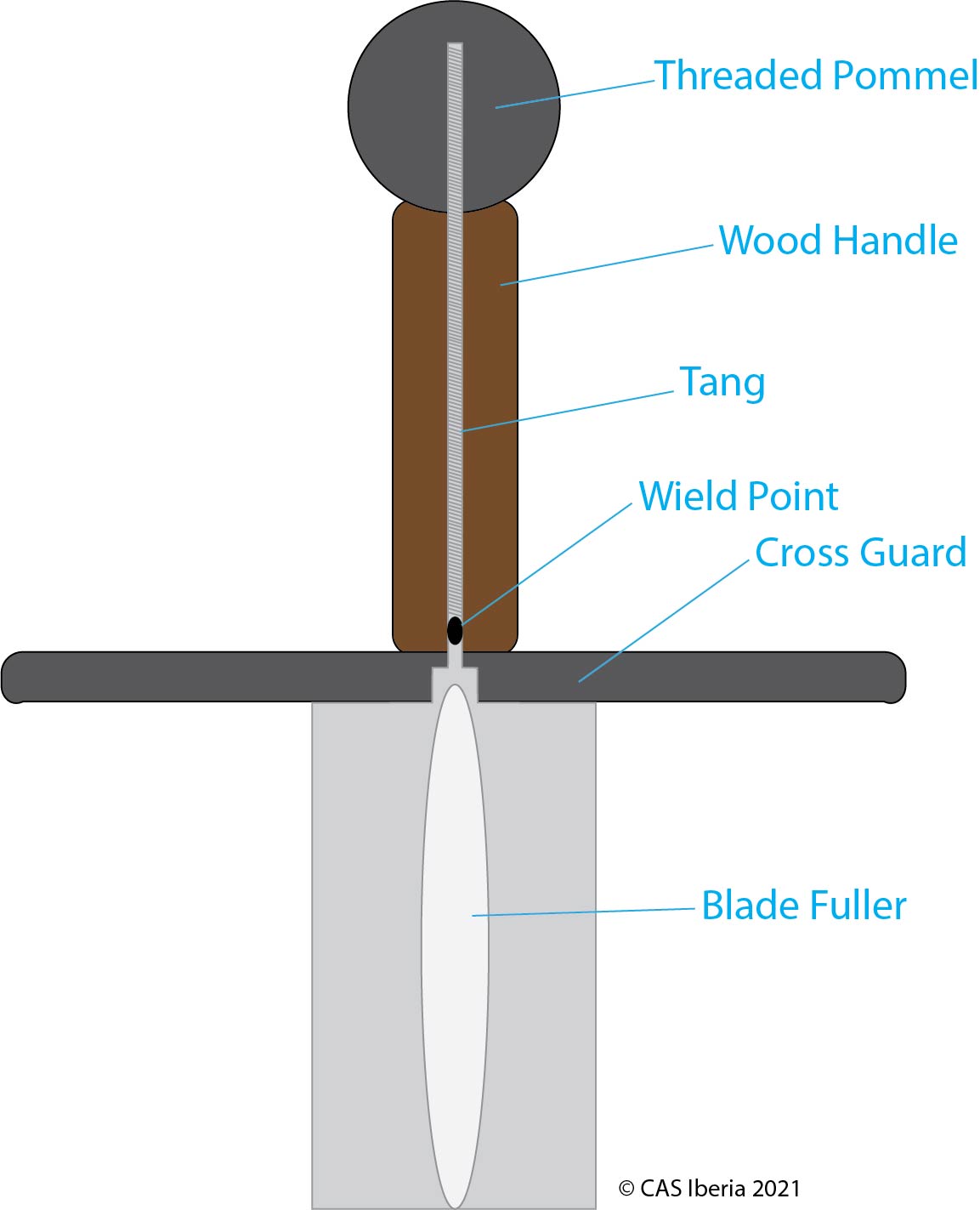
As mentioned above, full tang swords do exist on the market but are far from traditional in their construction. CAS has sold several full tang swords over the years. Some of the earliest were triple pinned, full tang katana from Spain with stabilized wood handles (9424.E, 9524.E). Currently CAS sells the A.P.O.C. series and all the current swords in the line feature a full tang construction.
https://casiberia.com/category/apoc-swords-axes/apoc
A better question would be why would you want a full tang sword. From a consumer perspective, maintenance is the big reason. Traditionally made swords usually have naturally made components like wood, leather, horn and or bone that tend to shrink and swell over time. If the handle becomes loose on a medieval sword that’s peened, you will have to hammer the pommel until the handle is snug again. If you don’t know what you’re doing, you could cut yourself and or damage the pommel. If that doesn’t work, then replacing the handle is much more of a chore.
On a katana, you must unpin the handle, carefully slide off the handle and shim the inside. To properly clean a katana blade requires removing the handle and the habaki (blade collar) in order to find rust. Any time you disassemble a sword you could potentially have safety and reassembly issues that may arise. Its never an easy task no matter what the design.
A full tang sword is way easier to clean and maintenance. If the handle becomes loose, just tighten the screws or socket, depending on the tooling. If the handle becomes damaged, you just remove it and replace it will another handle slab. It’s a major time saver regarding maintenance.
Owning a functional sword is like having a pet. They require regular attention, observation and maintenance. If you are one of those just-in-case people or just want to have a functional blade in your home for whatever reason, please consider looking at our A.P.O.C. brand of swords. There are multiple styles of A.P.O.C. swords from Japanese to Medieval European in design and very affordable. Most importantly A.P.O.C. swords require very little maintenance and they will not get ugly if you forget about them.